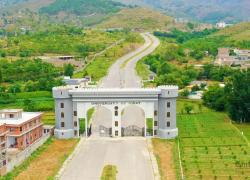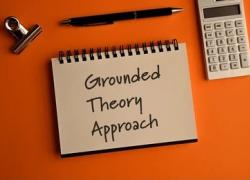Historical Research Design: A step-by-step guide on how to develop it?
Developing a historical research design involves a systematic step-by-step process. Begin by clearly defining your research questions and conducting a thorough review of existing literature to identify gaps and establish the context. Choose a research philosophy and approach that align with your goals, and select appropriate data sources, considering ethical considerations. Develop a time frame, sampling strategy, and data collection methods, such as archival research or oral history interviews.
Draft a comprehensive research proposal that outlines your methodology and theoretical framework, and, if applicable, conduct pilot testing. Execute your research plan, analyzing historical data and interpreting findings. Conclude by summarizing key insights, addressing limitations, and suggesting avenues for future research in your written report.
Embarking on historical research requires a structured approach to ensure a comprehensive and well-grounded investigation of the past. This blog post provides you with a step-by-step guide for developing a historical research design and will elaborate the following important points:
- Importance of Historical Research Design
- Strengths and limitations of Historical Research Design
- What research philosophy suits Historical Research Design?
- Why do researchers select a Historical research design?
- Is the Historical research design qualitative or quantitative in nature?
- What are the most commonly used data collection methods in Historical Research Design?
- How to develop a Historical Research Design?
- What are the procedures involved in Historical Design?
- How many participants used to be engaged in Historical Research?
- What is the common format or structure of a Historical Research Study?
- How long should be a Historical Research study?
- Who utilizes the Historical Research?
- How is Historical Research Design used?
These important topics are discussed here in detail one by one:
Importance of Historical Research Design
The importance of historical research design lies in its role as a structured and systematic approach to investigating and interpreting the past. Here are key reasons highlighting the significance of historical research design:
- Guiding the research process: Historical research design provides a clear framework and structure for the research process. It helps researchers define their objectives, formulate research questions, and choose appropriate methods to systematically explore the past.
- Ensuring rigor and validity: A well-designed historical research study follows rigorous methodologies, enhancing the validity and reliability of the findings. This ensures that the interpretations and conclusions drawn from historical data are sound and credible.
- Systematic exploration of primary sources: Historical research design guides researchers in the systematic exploration of primary sources, such as archival documents, manuscripts, artifacts, and oral histories. This organized approach helps uncover valuable historical evidence.
- Promoting contextual understanding: Historical research design emphasizes the importance of contextualization. By placing events within their historical, social, cultural, and political context, researchers gain a deeper and more nuanced understanding of historical phenomena.
- Contributing to historical knowledge: Through systematic inquiry, historical research design contributes to the growth of historical knowledge. It adds new insights, perspectives, and interpretations, expanding our understanding of the past and challenging existing narratives.
- Informing decision-making and policy: Historical research design can inform decision-making and policy by providing historical context for contemporary issues. Policymakers can draw on historical insights to make more informed decisions and understand the long-term implications of actions.
- Preserving cultural heritage: By documenting and interpreting historical events, historical research design contributes to the preservation of cultural heritage. It helps safeguard traditions, artifacts, and memories, ensuring that important aspects of human history are not lost.
- Enhancing critical thinking skills: Engaging in historical research design cultivates critical thinking skills among researchers. The process involves evaluating sources, questioning assumptions, and making reasoned interpretations, fostering intellectual rigor.
- Educational value: Historical research design has educational value, both for researchers and the broader public. It encourages a deeper engagement with history, promotes historical literacy, and facilitates a more informed and nuanced understanding of the past.
In essence, historical research design is crucial for ensuring the quality, ethical conduct, and meaningful contributions of research to the broader field of historical inquiry. It enhances the reliability of historical knowledge, promotes a disciplined approach to understanding the past, and provides a foundation for informed decision-making in various domains.
Strengths and weakness/limitations of Historical research design
Historical research design excels in providing a deep and contextualized understanding of past events, cultures, and phenomena. Through meticulous examination of primary sources and a commitment to contextualization, researchers can construct detailed narratives, contributing valuable insights to the collective knowledge of human history. The emphasis on interdisciplinary perspectives, preservation of cultural heritage, and fostering critical thinking skills further enhances the strengths of historical research design.
With these strengths, this research design contributes to a nuanced understanding of the past, preservation of cultural heritage, and informed decision-making in various fields. The careful application of these strengths enhances the reliability and significance of historical research findings. These are listed here with a brief explanation of each:
Strengths of Historical Research Design:
- Rich insight into the past: Historical research design allows for a rich and in-depth exploration of past events, cultures, and phenomena, providing valuable insights into the complexities of human history.
- Contextual understanding: The emphasis on contextualization in historical research design helps researchers understand historical events within the broader social, cultural, economic, and political context, contributing to a more comprehensive understanding.
- Preservation of cultural heritage: Historical research design plays a key role in preserving cultural heritage by documenting and interpreting historical events, traditions, and artifacts, ensuring that important aspects of human history are not lost.
- Contribution to Historical knowledge: Well-conducted historical research contributes to the growth of historical knowledge by adding new perspectives, interpretations, and insights to the existing body of historical scholarship.
- Enhancement of critical thinking skills: Engaging in historical research design fosters critical thinking skills among researchers. It involves the evaluation of sources, questioning assumptions, and making reasoned interpretations, promoting intellectual rigor.
- Informing contemporary understanding: Historical research design can inform contemporary understanding by providing insights into the historical roots of current issues, institutions, and cultural practices, facilitating informed decision-making and policy.
However, historical research design is not without its challenges. The reliance on potentially biased or incomplete historical records can limit the objectivity of interpretations. The subjective nature of historical analysis, the difficulty in establishing causation, and ethical considerations related to privacy and cultural sensitivity present additional complexities. Additionally, the lack of control over variables and the time and resource-intensive nature of historical research can impact the feasibility and generalizability of findings.
Limitations of Historical Research Design:
- Availability and bias of historical sources: The availability and potential bias of historical sources can be a limitation. Certain voices and perspectives may be underrepresented or absent in historical records, leading to an incomplete or biased narrative.
- Subjectivity in interpretation: Interpretation in historical research is subjective, influenced by the researcher’s perspectives, biases, and cultural background. This subjectivity can impact the objectivity of historical analyses.
- Challenges in causation: Determining causation in historical research is challenging due to the complexity of historical events. Multiple factors may contribute to outcomes, and isolating a single cause can be difficult.
- Difficulty in generalization: Generalizing findings from historical research to broader populations or contexts can be challenging. Historical contexts are often unique, and what holds true for one time and place may not apply universally.
- Incomplete or missing information: Historical records may be incomplete or missing, limiting the amount of available information. Gaps in the historical record can hinder researchers from constructing a comprehensive narrative.
- Ethical considerations: Ethical considerations in historical research, such as issues related to privacy and cultural sensitivity, can be complex. Researchers must navigate these ethical challenges with care and respect.
- Limited control over variables: Unlike experimental research designs, historical research often lacks control over variables. Researchers cannot manipulate or control the conditions of historical events, making it challenging to establish causal relationships.
- Time and resource intensive: Historical research can be time and resource-intensive. Accessing archives, conducting thorough analyses, and navigating complex historical contexts require significant investments of time and effort.
- Challenge of historical bias: Historical records may reflect the biases of the individuals who created them. Uncovering and addressing these biases is essential, but it can be challenging, especially when dealing with sources from different cultural or historical perspectives.
Despite these limitations, historical research design remains a valuable and essential approach for understanding the past. Researchers must be aware of these challenges and employ rigorous methodologies to mitigate their impact on the quality and validity of their findings. With these limitations, the strengths of historical research design contribute significantly to our understanding of the past.
What research philosophy suits Historical Research Design?
The most suitable research philosophy for historical research design is often associated with interpretivism. Interpretivism is a research philosophy that emphasizes the subjective interpretation of social phenomena and recognizes the importance of context, meaning, and the perspectives of individuals. Historical research involves the exploration and interpretation of past events, cultures, and phenomena, and interpretivism aligns well with the nature of historical inquiry for several reasons:
- Subjectivity and contextual understanding: Interpretivism acknowledges the subjectivity inherent in human experiences and interpretations. In historical research, understanding the context in which events occurred and interpreting the meaning of historical phenomena require an appreciation for the subjective perspectives of individuals and communities.
- Emphasis on qualitative data: Historical research often relies on qualitative data, such as documents, artifacts, and narratives. Interpretivism is well-suited to qualitative research methods, emphasizing the richness and depth of data that can be gathered through in-depth analysis and interpretation.
- Multiple realities and perspectives: Interpretivism recognizes that there can be multiple interpretations and realities based on individual experiences and cultural contexts. In historical research, where diverse sources and viewpoints are considered, this philosophical approach allows for a more nuanced understanding of the past.
- Holistic and contextual analysis: Interpretivism encourages researchers to conduct holistic and contextual analyses. In historical research design, this means examining events within their broader historical, social, cultural, and political contexts to provide a comprehensive interpretation.
- Qualitative research methods: The qualitative research methods associated with interpretivism, such as case studies, content analysis, and narrative analysis, align well with the nature of historical research. These methods allow for a detailed exploration of historical sources and the complexities of past events.
While interpretivism is often the preferred research philosophy for historical research, it’s important to note that historical researchers may also draw on elements of other research philosophies based on the specific goals and nature of their inquiries.
Pragmatism, which emphasizes the practicality of research methods in achieving specific objectives, is another philosophy that may find application in historical research, especially when combining qualitative and quantitative approaches. Ultimately, the choice of research philosophy depends on the researcher’s epistemological and ontological assumptions and the nature of the research questions being addressed.
Why do researchers select a Historical Research Design?
Historical research designs are chosen when researchers aim to understand and interpret past events, cultures, and phenomena. The design allows for a detailed exploration of historical contexts, providing insights into the factors that shaped the course of history.
Researchers select a historical research design when their aim is to delve into the past, seeking a nuanced understanding of historical events, cultures, and phenomena. This design is chosen to explore causation, trace changes over time, and contextualize events within the broader historical, social, and cultural frameworks.
By employing a historical research design, researchers can contribute to the preservation of cultural heritage, construct meaningful historical narratives, and test hypotheses about the past. The interdisciplinary nature of historical research also allows researchers to draw on insights from various disciplines, contributing to a more comprehensive and informed interpretation of human history. Furthermore, historical research designs have educational value, fostering historical literacy and providing valuable context for contemporary issues.
Ultimately, the choice of a historical research design is driven by the researcher’s specific goals, the nature of the research questions, and the desire to contribute to a more nuanced understanding of the past.
Is the Historical Research Design qualitative or quantitative in nature?
Historical research design is primarily qualitative in nature. Qualitative research involves the exploration and interpretation of non-numerical data, aiming to understand the complexities and meanings associated with human experiences, behaviors, and phenomena.
In historical research, the emphasis is on examining historical events, cultures, and contexts in a detailed and contextualized manner. Researchers often rely on qualitative methods such as the analysis of primary sources (documents, artifacts, oral histories), content analysis, case studies, and narrative analysis to construct rich and nuanced accounts of the past.
While quantitative methods may be used in some aspects of historical research, such as statistical analysis of demographic data, the overall nature of historical research design is predominantly qualitative, focusing on the qualitative interpretation of historical sources and narratives.
What are the most commonly used data collection methods in Historical Research Design?
Historical research design involves a diverse range of data collection methods, each tailored to the nature of the historical inquiry and the available sources. The most commonly used data collection methods in historical research include:
- Archival research: Examining primary sources stored in archives, libraries, and special collections. These sources include letters, diaries, official documents, manuscripts, newspapers, and other records.
- Oral history interviews: Conducting interviews with individuals who have firsthand knowledge or experiences related to the historical events under investigation. This method is particularly useful for capturing personal narratives and perspectives.
- Historical documents analysis: Examining historical documents, letters, treaties, legal documents, and other written records to extract information and gain insights into the historical context. Examining personal diaries and letters to gain intimate insights into the thoughts, feelings, and experiences of individuals in the past.
- Artifact analysis: Studying physical artifacts such as tools, art, clothing, photograph and other objects from the past. Artifact analysis provides tangible evidence of historical practices and material culture.
- Biographical research: Investigating the lives of individuals in the past through biographical research. This method involves studying personal narratives, autobiographies, and biographies.
These methods are often used in combination to create a holistic and multifaceted understanding of historical events and phenomena. The choice of methods depends on the research questions, the availability of sources, and the goals of the historical inquiry.
How to develop a Historical Research Design?
Developing a historical research design involves a systematic process to plan and execute a study that investigates and interprets past events, cultures, or phenomena. Here are the key steps to develop a historical research design:
- Define the research questions: Clearly articulate the research questions that you seek to answer. Your questions should be specific, focused, and relevant to the historical context you are investigating. These questions will guide the entire research process.
- Review existing literature: Conduct a thorough review of existing literature and historical research related to your topic. This step helps you understand the historiography, identify gaps in knowledge, and refine your research questions.
- Select a research philosophy: Choose a research philosophy that aligns with your epistemological and ontological perspectives. Commonly, historical research leans towards interpretivism due to its emphasis on understanding meaning and context.
- Choose a research approach: Decide on the overall approach of your study. Historical research can be descriptive, explanatory, comparative, or focused on case studies, depending on your research goals and questions.
- Identify data sources: Determine the types of data sources you will use. These may include archival documents, oral histories, artifacts, photographs, letters, newspapers, and other historical materials. Consider the reliability and authenticity of your chosen sources.
- Select data collection methods: Choose appropriate data collection methods based on your data sources. Common methods include archival research, oral history interviews, content analysis, artifact analysis, and more. Ensure that your methods align with your research questions.
- Consider ethical considerations: Address ethical considerations associated with historical research, including issues of privacy, confidentiality, and cultural sensitivity. Ensure that you have permission to access and use historical materials responsibly.
- Develop a time frame: Establish a chronological framework for your study. Define the time period you will be investigating and consider the historical context, events, and changes that occurred during that time.
- Create a sampling strategy: If applicable, develop a sampling strategy for your study. Determine which historical cases, individuals, or events will be included in your analysis. Consider whether your study will be comprehensive or focused on specific examples.
- Choose data analysis techniques: Outline the data analysis techniques you will use. Depending on your research design, this may involve qualitative analysis methods such as thematic analysis, content analysis, or narrative analysis.
- Draft a research proposal: Write a comprehensive research proposal that outlines your research questions, objectives, methodology, data sources, and analytical approach. Clearly articulate the significance of your study and its contribution to historical knowledge.
- Pilot testing (if applicable): Consider conducting a pilot study to test your research design on a small scale. This can help identify any practical issues, refine your methods, and ensure the feasibility of the full-scale study.
- Execute the research plan: Implement your research design by collecting, analyzing, and interpreting historical data according to your established plan. Be attentive to unexpected findings and be flexible in adjusting your approach if necessary.
- Write and present findings: Communicate your research findings through a comprehensive written report. Present your results in a clear and organized manner, providing historical context, interpretations, and implications of your study.
By following these steps, you can develop a robust historical research design that addresses your research questions, leverages appropriate data sources, and contributes meaningfully to the understanding of the past.
What are the key steps involved in Historical Design?
Developing a historical research design involves several key steps to ensure a systematic and rigorous approach to investigating and interpreting past events. The various steps involved in historical research design can be summarized in the following:
- Formulating Research Questions: The first step in historical research design is to clearly define the research questions you want to answer about the past. These questions should be specific, focused, and researchable, considering the availability of sources and the limitations of historical inquiry.
- Identifying Sources: Once the research questions are established, the next step is to identify and locate relevant primary and secondary sources. Primary sources are firsthand accounts or records of the past, such as diaries, letters, government documents, artifacts, and oral histories. Secondary sources are interpretations of the past written by historians or other experts, such as books, articles, and documentaries.
- Evaluating Sources: After identifying potential sources, it is crucial to evaluate their authenticity, reliability, and credibility. This involves assessing the source’s provenance, the author’s credentials, the consistency with other evidence, and the potential for bias or manipulation.
- Analyzing Sources: With carefully evaluated sources, the historian can proceed to extract and interpret information. This involves reading, analyzing, and coding the sources to identify key themes, patterns, and trends. Historians may use various techniques, such as content analysis, thematic analysis, and narrative analysis, to extract meaningful insights from the sources.
- Synthesizing Findings: Once the sources have been analyzed, the historian must synthesize the findings into a coherent narrative. This involves integrating information from multiple sources, drawing connections between different pieces of evidence, and constructing a plausible explanation for past events.
- Drawing Conclusions: Based on the analysis and synthesis of evidence, the historian can form conclusions about the research questions. These conclusions should be supported by evidence, well-reasoned, and open to revision as new evidence emerges.
- Communicating Results: The final step in historical research design is to communicate the findings to others. This may involve writing a research paper, presenting at a conference, or publishing in a scholarly journal. Historians must effectively communicate their research methods, findings, and conclusions to inform and engage the public with their understanding of the past.
Throughout these steps, historians must maintain objectivity, critical thinking, and a commitment to historical accuracy. They must be aware of their own biases and limitations as interpreters of the past, and they must be open to considering alternative perspectives and interpretations.
How many participants used to be engaged in Historical Research?
The number of participants in historical research can vary widely depending on the nature of the study, the research questions, and the available historical sources. Unlike some other research designs, historical research doesn’t always involve direct interaction with living participants in the traditional sense, as it often relies on historical documents, artifacts, and other archival materials.
The number of participants engaged in historical research has varied throughout history, reflecting the changing nature of historical inquiry and the availability of resources. In the early days of historical research, the field was dominated by a small group of professional historians who had access to the limited resources available in libraries and archives. However, as the field of history expanded and new sources became available, the number of participants in historical research grew significantly.
Today, historical research is a global enterprise involving thousands of scholars from all walks of life. These scholars work in a variety of settings, including universities, museums, archives, and government agencies. They use a wide range of methods to investigate the past, including archival research, oral history, archaeology, and statistical analysis.
The number of participants in historical research is difficult to quantify precisely, as many people engage in historical research as part of their education, work, or hobbies. However, a recent survey by the American Historical Association found that there are over 15,000 professional historians in the United States alone. This number does not include the many thousands of other individuals who are engaged in historical research on a more informal basis.
The growth in the number of participants in historical research is a reflection of the increasing importance of history in our society. As we face the challenges of the 21st century, it is more important than ever to understand the past in order to make informed decisions about the future. Historical research provides us with a valuable tool for understanding the complex forces that have shaped our world.
In essence, the concept of “participants” in historical research is broad and can encompass a range of historical sources and materials. The focus is on engaging with and analyzing the available historical evidence to answer research questions and contribute to our understanding of the past. The specific approach to participant involvement in historical research is tailored to the objectives and methodologies of the study.
What is the common format or structure of a Historical Research Study?
The structure of a historical research study typically follows a standard format that includes several key sections. While variations may exist based on the specific requirements of academic institutions or publishers, the common form of a historical research study often includes the following sections:
- Introduction:
- Provides an overview of the research topic.
- States the research questions or objectives.
- Offers background information and context for the study.
- Highlights the significance and relevance of the research.
- Provides an overview of the research topic.
- Literature Review:
- Surveys existing literature related to the research topic.
- Identifies key theories, concepts, and debates.
- Discusses the gaps or limitations in current knowledge.
- Establishes the research’s connection to prior scholarship.
- Surveys existing literature related to the research topic.
- Theoretical Framework (if applicable):
- Outlines the theoretical perspectives guiding the study.
- Explores the conceptual framework informing the research.
- Outlines the theoretical perspectives guiding the study.
- Research Design and Methodology:
- Describes the research philosophy (often interpretivism in historical research).
- Explains the research approach (descriptive, explanatory, comparative, etc.).
- Details data sources, including archival materials, documents, artifacts, etc.
- Discusses data collection methods, such as archival research, oral history interviews, etc.
- Addresses sampling strategies (if applicable).
- Outlines data analysis techniques.
- Describes the research philosophy (often interpretivism in historical research).
- Ethical Considerations:
- Addresses ethical issues related to privacy, confidentiality, and cultural sensitivity.
- Discusses the responsible use of historical materials.
- Addresses ethical issues related to privacy, confidentiality, and cultural sensitivity.
- Historical Context:
- Provides background information on the historical period under investigation.
- Highlights key events, social, cultural, political, and economic factors.
- Provides background information on the historical period under investigation.
- Data Presentation:
- Presents the historical data collected in an organized manner.
- May include excerpts from primary sources, images, or other relevant materials.
- Presents the historical data collected in an organized manner.
- Analysis and Interpretation:
- Analyzes the historical data to answer the research questions.
- Offers interpretations and explanations of findings.
- Discusses the implications of the analysis.
- Analyzes the historical data to answer the research questions.
- Conclusion:
- Summarizes the key findings and interpretations.
- Addresses how the study contributes to existing knowledge.
- Reflects on the limitations of the study.
- Suggests avenues for future research.
- Summarizes the key findings and interpretations.
- References:
- Lists all sources cited in the study, following a specific citation style (e.g., APA, MLA).
- Lists all sources cited in the study, following a specific citation style (e.g., APA, MLA).
- Appendices (if applicable):
- Includes additional materials such as maps, tables, charts, or transcripts.
- Includes additional materials such as maps, tables, charts, or transcripts.
It’s important to note that the structure may vary, and some historical research studies may include additional sections or use different terminology. Researchers should adhere to the specific guidelines provided by academic institutions or publishers and choose a structure that best suits the goals of their individual study.
How long should be a Historical Research study?
The length of a historical research study can vary widely depending on factors such as the scope of the research, the depth of analysis, and the specific requirements of the academic institution or publisher. There is no fixed rule for the length of a historical research study, as it largely depends on the complexity of the research questions and the richness of the historical data being analyzed.
However, to provide a general guideline:
- Undergraduate level: Undergraduate historical research projects or theses typically range from 20 to 40 pages. These studies may focus on a specific aspect of history and require a moderate level of analysis.
- Master’s level: Master’s level historical research theses or dissertations can vary but often fall within the range of 50 to 100 pages. This allows for a more in-depth exploration of the research questions and a comprehensive analysis of historical data.
- D. level: Ph.D. dissertations in history can be more extensive, ranging from 100 to 300 pages or more. These studies often involve original contributions to the field and require a thorough examination of historical sources and scholarship.
It’s crucial to follow any specific guidelines or requirements provided by the academic institution or publisher. Additionally, the quality of the research and the clarity of presentation are more important than the sheer length of the document. A well-structured and focused study that effectively addresses the research questions and contributes meaningfully to the understanding of the past is paramount. Researchers should prioritize conciseness, clarity, and scholarly rigor in their writing.
Who utilizes the Historical Research?
Historical research is utilized by a diverse range of individuals, professionals, and institutions across various fields. Here are some key groups that commonly engage in or benefit from historical research:
- Historians: Professional historians, including academic historians, museum historians, and independent researchers, engage in historical research to contribute to the understanding of the past. They often publish their findings in academic journals, books, or present them at conferences.
- Archivists and curators: Professionals working in archives, libraries, and museums utilize historical research to manage and preserve collections. They may conduct research to catalog and interpret historical documents, artifacts, and materials.
- Educators: Teachers and educators use historical research to develop curriculum materials, lesson plans, and educational resources. They aim to provide students with a comprehensive and accurate understanding of historical events and contexts.
- Policy analysts: Professionals in policy analysis and public policy use historical research to understand the historical roots of current issues. This helps inform policy decisions and provides context for contemporary challenges.
- Journalists and writers: Journalists and writers often rely on historical research when writing articles, books, or reports. Historical context enhances the depth and accuracy of their narratives, especially when covering historical events or analyzing social phenomena.
- Genealogists: Individuals researching their family history or genealogy use historical research to trace lineage, understand familial migrations, and uncover historical details about ancestors.
- Legal professionals: Legal professionals, including lawyers and judges, may engage in historical research to establish historical context in legal cases. This is especially relevant in cases involving historical events, property disputes, or legal precedents.
- Government agencies: Government agencies, particularly those responsible for cultural affairs, tourism, and historical preservation, use historical research to inform policies, heritage conservation, and public awareness initiatives. Organizations focused on cultural heritage, preservation, and conservation use historical research to safeguard and promote cultural artifacts, traditions, and historical sites.
The utilization of historical research is widespread and spans multiple disciplines, contributing to a deeper understanding of the past and its impact on contemporary society.
How is Historical Research Design used?
Historical research design is used in various ways across different fields and disciplines. Here are some common applications and uses of historical research design:
- Academic Research:
- Contributions to knowledge: Historians and scholars use historical research design to contribute new insights, interpretations, and knowledge to the academic understanding of the past.
- Theses and dissertations: Graduate students often employ historical research design for their theses and dissertations, exploring specific historical topics in-depth.
- Education:
- Curriculum development: Educational professionals use historical research to develop curriculum materials, lesson plans, and educational resources for teaching history in schools and universities.
- Student research projects: Students engage in historical research as part of research projects, assignments, or coursework.
- Archives and museums:
- Artifact interpretation: Archivists and curators utilize historical research to interpret and catalog artifacts, documents, and materials in archives and museum collections.
- Exhibition development: Historical research informs the development of museum exhibitions, ensuring accurate representation and contextualization of historical items.
- Policy development:
- Context for policy decisions: Policy analysts and government officials use historical research to understand the historical context of current issues, providing insights that can inform policy development and decision-making.
- To understand the causes and consequences of past events: Historical research can help us to understand why certain events happened in the past and what impact they had on the course of history.
- To inform present and future decisions: By understanding the past, we can gain valuable insights that can inform our decision-making in the present and future.
- Media and journalism:
- Article and book writing: Journalists and writers use historical research to write articles, books, and reports that provide historical context and accuracy in storytelling.
- Documentary production: Producers of documentaries rely on historical research design to create accurate and informative documentaries about historical events and figures.
- Legal and judicial context:
- Legal cases: Legal professionals use historical research in legal cases where historical context is crucial for establishing facts, understanding property rights, or interpreting legal precedents.
- Genealogy:
- Family history research: Genealogists use historical research to trace family histories, understand migrations, and uncover historical details about ancestors.
- Cultural heritage preservation:
- Heritage conservation: Organizations focused on cultural heritage use historical research to preserve and promote cultural artifacts, traditions, and historical sites.
- To examine social, political, economic, and cultural trends: Historical research can help us to identify and analyze long-term trends in society, politics, economics, and culture.
- Urban planning and architecture:
- Urban development: Urban planners and architects employ historical research to understand the historical development of cities and neighborhoods, guiding restoration and urban design projects.
- Business strategy:
- Industry analysis: Businesses may use historical research to analyze the historical development of industries, markets, and companies, informing strategic planning and decision-making.
- Advocacy and nonprofit work:
- Understanding social issues: Nonprofit organizations and advocates use historical research to understand the historical roots of societal issues, informing their strategies for social change and justice.
- Personal enrichment:
- Self-exploration: Individuals may engage in historical research for personal enrichment, exploring their own family history or delving into historical topics of personal interest.
- To foster empathy and understanding: Historical research can help us to appreciate the diversity of human experiences and develop empathy for people from different cultures and time periods.
Conclusion:
In essence, historical research design is a systematic approach to investigating past events and understanding the human experience over time. It involves a rigorous process of identifying research questions, gathering and evaluating evidence, and interpreting findings to gain a deeper understanding of the past. It is a versatile tool used to explore, interpret, and understand the past in various contexts, contributing to knowledge, education, preservation, and decision-making across a wide range of fields.
It is a powerful tool that can be used to understand the past, inform the present, and shape the future. By carefully evaluating evidence, considering multiple perspectives, and contextualizing events, historical research can provide us with valuable insights into the complex tapestry of human history.


















